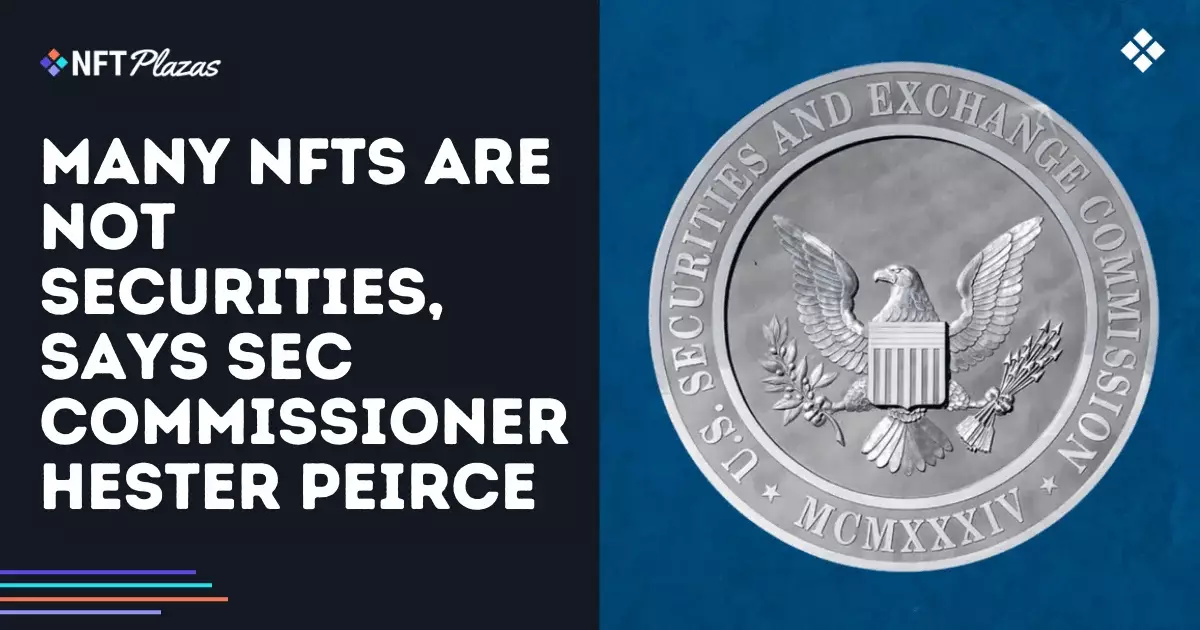In a world where digital assets are rapidly reshaping the economic landscape, the tension between innovation and regulation often becomes palpable. Recently, SEC Commissioner Hester Peirce’s remarks have ignited fervent discussions about the classification of non-fungible tokens (NFTs) as securities. At the SEC Speaks 2025 event, Peirce stated that many NFTs should not be categorized under the strict securities laws of the United States. While this may seem like a breath of fresh air for creators and investors in the NFT space, the ongoing enforcement actions by the SEC paint a much more complex picture of uncertainty and ambiguity within the industry.
Peirce’s argument hinges on the premise that the classification of digital assets should not solely depend on their type but rather on how they are marketed and structured. This perspective raises a fundamental question: Who really benefits from a stringent regulatory framework? The response is troubling—the very bureaucratic machinery that ostensibly aims to protect consumers often ends up handicapping creative progress and innovation. Instead of encouraging artists and developers to explore the NFT realm, the current regulatory approach stifles risk-taking and experimentation with its erratic enforcement policies.
The Call for Safe Harbors
The highlight of Peirce’s address was her advocacy for a Safe Harbor framework, a proposal designed to give crypto projects an initial grace period—potentially three years—before they face rigorous regulatory requirements. While this idea carries merit, it reflects an inherent contradiction in how regulatory bodies approach technology. Shouldn’t the regulatory environment be as innovative as the technologies it seeks to govern? Why wait three years for a non-invasive framework instead of creating an agile set of rules that encourages growth from the outset?
The Safe Harbor framework suggests a recognition of the need for a new paradigm, one that allows the cryptocurrency ecosystem to evolve organically without the looming threat of immediate penalties. However, the hesitancy of the SEC to adopt this proposal reflects an outdated view that fails to appreciate the fast-paced nature of technological advancement. In a race characterized by rapid innovations like NFTs, regulatory frameworks should be adaptive, not stifling.
A Call for Proactive Engagement
If regulators genuinely wish to protect investors while fostering innovation, they should move beyond reactive enforcement whims and engage with industry stakeholders proactively. Actively soliciting feedback would allow the SEC to craft rules that acknowledge the nuances of digital assets without resorting to sweeping generalizations. The current atmosphere of ambiguity leaves artists and investors in a quagmire of uncertainty, which can deter them from participating in the NFT market altogether.
To further complicate matters, Peirce’s caution regarding certain NFTs potentially qualifying as securities if tied to investment contracts serves as a reminder that the lines are continually blurred. There’s a danger in letting these complexities deter investors and creators who could otherwise contribute to a vibrant digital economy. If such NFT-related activities are subject to unwieldy regulations, the creative spirit that has driven the NFT boom could be smothered.
As the dialogue around NFTs and their legal definition evolves, the call for clarity couldn’t be more salient. Without it, we risk losing a revolutionary medium that has the potential to redefine art, ownership, and value. It’s time for the SEC to step outside its comfort zone and embrace a forward-thinking approach to digital asset regulation, one that champions innovation over enforcement.

